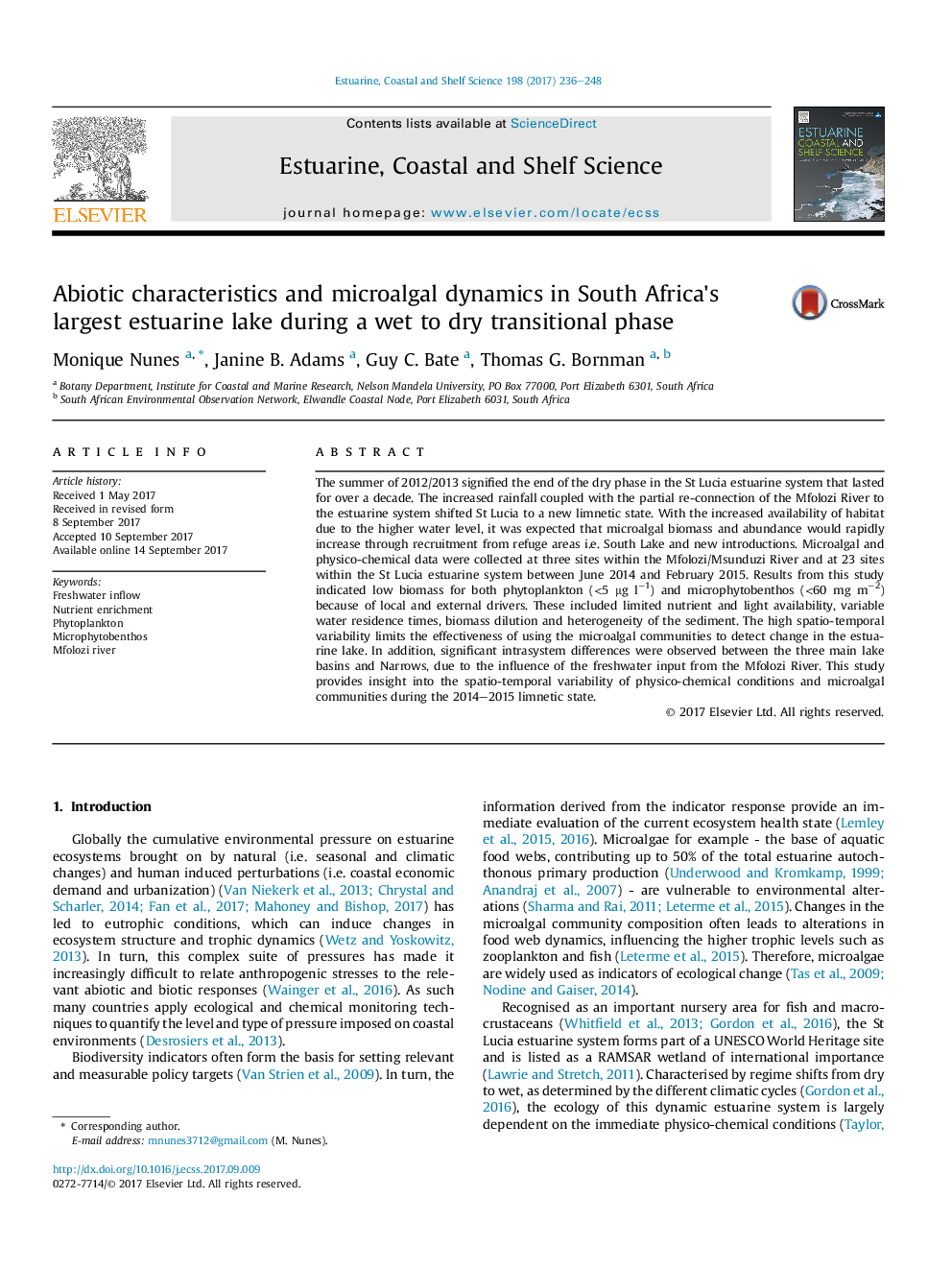| Article ID | Journal | Published Year | Pages | File Type |
|---|---|---|---|---|
| 5765311 | Estuarine, Coastal and Shelf Science | 2017 | 13 Pages |
The summer of 2012/2013 signified the end of the dry phase in the St Lucia estuarine system that lasted for over a decade. The increased rainfall coupled with the partial re-connection of the Mfolozi River to the estuarine system shifted St Lucia to a new limnetic state. With the increased availability of habitat due to the higher water level, it was expected that microalgal biomass and abundance would rapidly increase through recruitment from refuge areas i.e. South Lake and new introductions. Microalgal and physico-chemical data were collected at three sites within the Mfolozi/Msunduzi River and at 23 sites within the St Lucia estuarine system between June 2014 and February 2015. Results from this study indicated low biomass for both phytoplankton (<5 μg lâ1) and microphytobenthos (<60 mg mâ2) because of local and external drivers. These included limited nutrient and light availability, variable water residence times, biomass dilution and heterogeneity of the sediment. The high spatio-temporal variability limits the effectiveness of using the microalgal communities to detect change in the estuarine lake. In addition, significant intrasystem differences were observed between the three main lake basins and Narrows, due to the influence of the freshwater input from the Mfolozi River. This study provides insight into the spatio-temporal variability of physico-chemical conditions and microalgal communities during the 2014-2015 limnetic state.
